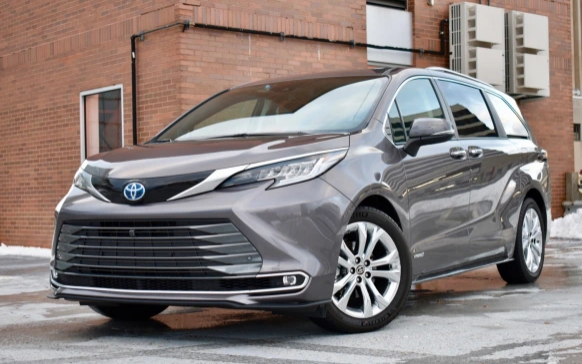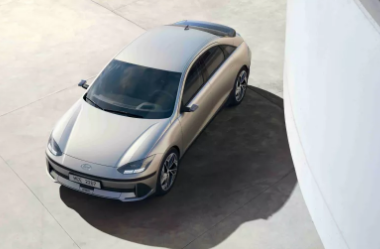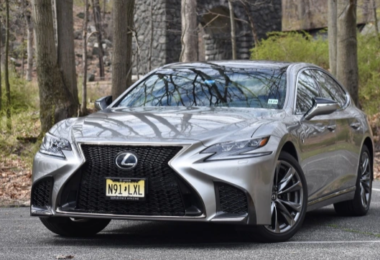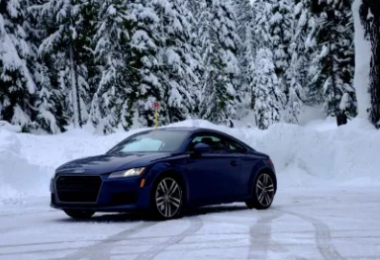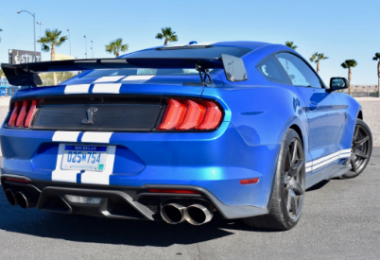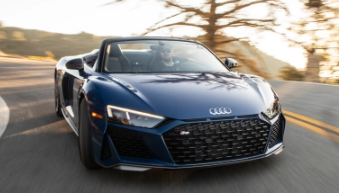Families used to prefer minivans, but three-row SUVs have largely taken their place. Toyota made no upgrades to its minivans, in contrast to other automakers who did so in an effort to win back customers. It is now catching up on lost time.
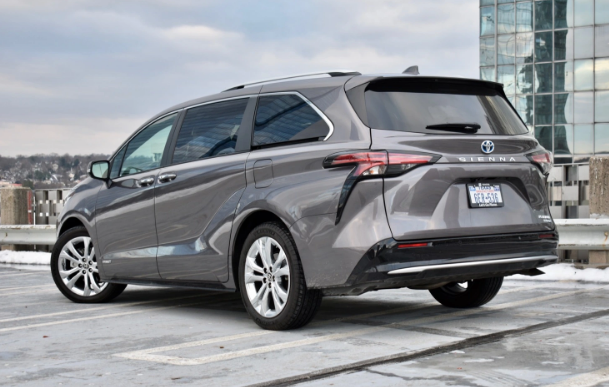
The 2021 Toyota Sienna, which replaces a model that first went on sale about ten years ago, is a complete redesign with extroverted styling, modern amenities like a built-in vacuum cleaner and 120-volt outlet, as well as a standard hybrid powertrain. This ought to set the Sienna apart from rival SUVs as well as more modern minivans like the Chrysler Pacifica/Voyager, Honda Odyssey, and Kia Sedona.
The base front-wheel drive LE model of the 2021 Toyota Sienna costs $35,635, which is $2,950 more than the price of the 2020 version. This was partially caused by Toyota getting rid of the L trim level, which was previously below the LE. For a base price of $51,635, our test vehicle was an all-wheel drive Platinum model, the top of the line, with leather seats, power sliding doors and a tailgate, and 20-inch wheels.
Interior and exterior
Toyota designers typically add as many styling cues as they can when trying to make a car look exciting. The 2021 Toyota Sienna was designed with great care to seem interesting. It’s difficult to blame the designers for putting the Sienna taillights from a Supra sports car and a big grille that resembles the mouth of a baleen whale given that many automobile consumers consider minivans to be terminally uncool. The exterior appearance is extremely cohesive despite these different components—at least by current Toyota standards.
Additionally, it stands in stark contrast to the more traditional-looking minivans from Chrysler, Honda, and Kia. In terms of internal size, the Toyota is comparable to its competitors, but has significantly less third-row headroom. The Sienna, like all minivans, has a lower step-in height and cargo lift-over height than most SUVs, despite the fact that this is still a large vehicle.
As is the case with all three-row vehicles, the Sienna’s 33.5 cubic feet of cargo space is only behind the Kia Sedona, the class-leading vehicle, and outperforms the Chrysler Pacifica and Honda Odyssey. However, when the seats are folded down, the Sienna presents a different picture. It falls short of the competition with 101 cubic feet of cargo space with the second and third rows folded, and 75.2 cubic feet with the third row folded. Toyota doesn’t have a third row that can power fold as Chrysler does, but it does have power sliding doors and a power liftgate.

The 2021 Toyota Sienna was designed with great care to seem interesting.
The Sienna begins to appear more impressive as you approach the front. Lower-level LE and XLE models come standard with an eight-seat layout and a bench seat in the second row. The number of seats is decreased to seven in higher trim levels because to the addition of second-row captain’s chairs. These chairs can move up to 25 inches forward and backward with the “Super Long Slide” option, and Limited and Platinum editions come with fold-out ottomans a la airliners. These features improve comfort for passengers in the second row, although the Kia Sedona has already had access to them from the 2015 model year.
The Sienna’s front end features a chic dashboard with an integrated touchscreen and what Toyota refers to as the “bridge,” an elevated center console that houses the gearshift and a few cupholders. You have a rubberized storage space beneath it that can accommodate a handbag. It’s a unique configuration for a minivan, but it works well. The elevated console has two levels of storage and brings the cupholders and shifter that you actually need to reach for closer to your reach.
The materials in our test car’s Platinum trim level were excellent. The rubberized, nonskid material was positioned strategically, the leather upholstery felt suitably opulent, and even the plastic trim Toyota employed in place of wood looked good. Designers could have toned down the color scheme, which features brown, beige, and gray tones that manage to look boring and contrast with one another.
Driver assistance, tech, and infotainment
The Sienna’s infotainment system is basically the same as that of other current Toyota vehicles, despite the external and interior designs’ surprising additions.
A 9.0-inch touchscreen, seven USB ports, an integrated Wi-Fi hotspot, and support for Apple CarPlay, Android Auto, and Amazon Alexa are all included in the base configuration. Options include GPS, a rear-seat entertainment system, and a 12-speaker JBL audio system. In contrast to the dual monitors available from Chrysler, the latter has a single 11.6-inch monitor that folds down from the ceiling.
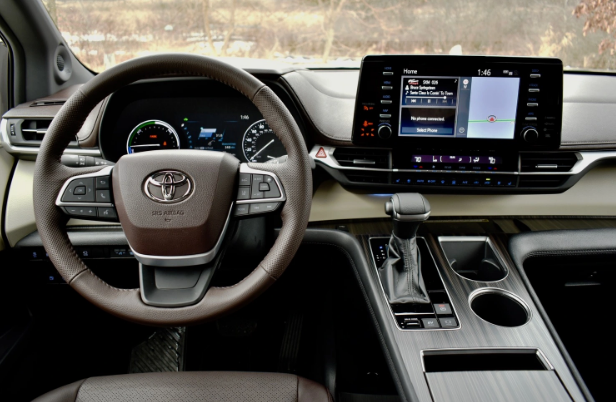
The touchscreen was typical Toyota, which meant that it had boring graphics but was simple to use (due in part to shortcut buttons and a volume knob). The “bridge” console’s cupholder slots and a dashboard shelf (which may be fitted with a wireless charging pad) were among the numerous locations the designers included for the driver to put their phone, but none of them really function. Larger phones cannot fit in the slots that allow a phone to sit upright, however larger phones can slide about on the dashboard shelf.
The touchscreen was typical Toyota, meaning it had simple visuals yet was simple to use.
Modern minivans are known for their gadgetry, so Toyota equipped the 2021 Sienna with a built-in vacuum cleaner, a 1,500-watt AC inverter, a tiny refrigerator, and a rear-seat intercom (that carriers over from the previous-generation model). However, due to a supplier issue, the fridge and vacuum won’t be offered at launch. For many years, Honda and Chrysler have also provided built-in vacuums.
Forward collision warning, automatic emergency braking, adaptive cruise control, automatic high beams, traffic sign recognition, lane-departure warning, and Toyota’s Lane Tracing Assist automated lane centering are all standard driver-assist features under the Toyota Safety Sense 2.0 moniker.
It’s also crucial to discuss cameras because the Sienna is a sizable car. The optional 360-degree video system in our test vehicle featured outstanding camera angles but a low-resolution screen. Additionally, the Sienna is the most recent Toyota model to be equipped with a video rearview mirror, which can be converted from a regular mirror to a video display by just flipping a switch. Because of this, the driver can see what is directly behind the vehicle without being obstructed by objects like roof pillars and other people. Due to the small back window of the Sienna, it was especially helpful.
Driving knowledge
Under the hood of the Sienna for 2021 comes one of the greatest changes. A hybrid drivetrain built around a 2.5-liter four-cylinder engine was used by Toyota to replace the outdated 3.5-liter V6 engine. The Sienna is one of a select few new vehicles that can only be purchased as a hybrid because that is the only available powertrain. However, you do have a choice between front-wheel drive and all-wheel drive.
Toyota claims that the system as a whole produces 245 horsepower. This is a reduction of 51 horsepower compared to the non-hybrid 2020 model and is also less than the non-hybrid versions of the Chrysler Pacifica, Honda Odyssey, and Kia Sedona, all of which have very sizable V6 engines. But it doesn’t seem to matter.
If you’re worried about not having enough power, keep in mind that the Sienna can pull 3,500 pounds, which is comparable to an Odyssey or Sedona. The Pacifica has a 100-pound increase in towing capacity. The Sienna can tow just as much as a Toyota Highlander Hybrid of equivalent size, demonstrating that an SUV is not necessarily necessary for towing.
The Sienna gets far better gas mileage than its rivals.
Of course, the Sienna seemed sufficient but unenthusiastic during highway overtaking, where we would have welcomed a little more oomph. But the only powertrain issue was that. It’s excellent that the hybrid technology makes the Sienna feel like a big Toyota Prius. Drivers accustomed to non-hybrid vehicles may find the interaction of the gasoline engine and electric motors a little strange, but the powertrain tuning ultimately promotes comfortable, fuel-efficient driving.
Toyota made no effort to make the Sienna feel athletic, in contrast to the Prius. That basically means you get a comfortable ride, which is probably what the majority of people looking to purchase a minivan are looking for anyhow. The steering didn’t feel as firm and precise as the Chrysler Pacifica’s, and we did detect some small trembling over bumps.
Fuel efficiency and safety
The Sienna also closely resembles the Prius in terms of gas mileage. With front-wheel drive, the minivan is rated at 36 mpg combined (36 mpg city, 36 mpg highway), while with all-wheel drive, it is rated at 35 mpg combined (35 mpg city, 36 mpg highway). That surpasses the opposition handily. The combined fuel economy of Chrysler, Honda, and Kia is all below 25 mpg.
The Pacifica Hybrid, a plug-in hybrid version of the Pacifica with 32 miles of all-electric range, is also available from Chrysler. However, the Pacifica Hybrid’s combined fuel economy in hybrid mode is only 30 mpg, and all-wheel drive is not an option.
The Insurance Institute for Highway Safety (IIHS) awarded the 2021 Toyota Sienna its top safety rating, “Top Safety Pick+” For the new model, the National Highway Traffic Safety Administration (NHTSA) hasn’t released crash-test ratings.
Toyota provides a powertrain warranty of five years and 60,000 miles in addition to a three-year, 36,000-mile basic warranty. These are fairly typical terms for a well-known automaker, but Kia offers a basic warranty for the Sedona of five years and 60,000 miles and a powertrain warranty of ten years and 100,000 miles.
The battery warranty for the Toyota Sienna is ten years and 150,000 miles, and the guarantee for other parts of the hybrid system is eight years and 100,000 miles.
How DT would set up this vehicle
Our Sienna Platinum test vehicle, which cost over $50,000, demonstrated that a minivan can be truly opulent if you’re ready to pay luxury-car costs. However, you may lower that cost by excluding some of those items.
We would descend the trim ladder a few steps to the XSE trim level. The “Super Long Slide” second-row seats, GPS, four-zone automatic climate control, and heated front seats are all included, as well as the same hybrid powertrain and driver-assist technology as the Platinum (and all other Sienna model levels).
The 1,500-watt inverter ($300) and the XSE Plus Package ($1,000), which incorporates wireless phone charging, would subsequently be added. If you live in a snowy area, all-wheel drive, a $760 option on the Sienna XSE, is another something to take into account.
Our view
The 2021 Toyota Sienna doesn’t completely reinvent the minivan, but this long needed update keeps Toyota competitive.
However, the Honda Odyssey lacks the Toyota’s sliding second row and optional all-wheel drive. It does, however, provide slightly more passenger space and more cargo space when the second and third rows of seats are folded. It cannot match the hybrid Sienna’s fuel efficiency either.
Although the Chrysler Pacifica is offered with a plug-in hybrid powertrain and “Stow ‘n Go” folding seats, these features are not offered in tandem, and an all-wheel drive Pacifica Hybrid is also not an option. Although it has a much lower reliability rating than the Toyota, the Chrysler is also only slightly nicer to drive. With a significantly cheaper base price than the Sienna, the Chrysler Voyager is a suitable Pacifica for those on a tighter budget.
Even though the Kia Sedona is getting on in years, it still offers comparable interior space and comes with Kia’s longer warranty.
For large families, minivans continue to be a viable option to SUVs, regardless of brand. They make up for their lack of tough style with utility. The Sienna can carry more passengers overall than Toyota’s own Highlander, and loading and unloading passengers and cargo will be simpler because to its lower ride height, sliding doors, and bigger tailgate aperture.
Do you need one?
Yes. It’s a great family vehicle, the Sienna.
You can also check Volkswagen Arteon 2021 Review, Price, And Other Things You Need To Know About This Product

